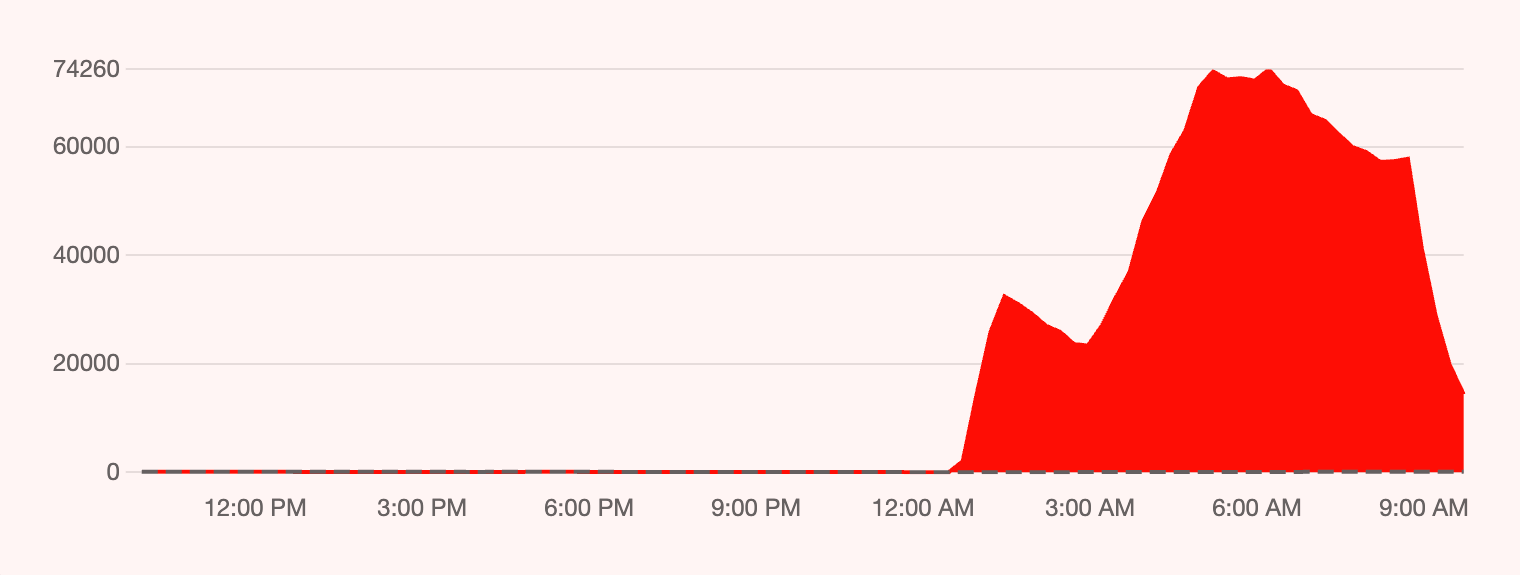

|
||

In a significant service disruption early Thursday, AT&T’s network experienced widespread outages, affecting cellular service and internet connectivity for users across the United States. According to the tracking site Downdetector, the issues began around 4 a.m. ET, with over 32,000 reports of outages, which surged to more than 71,000 by 8 a.m. ET.
Major cities, including Houston, Chicago, Dallas, Los Angeles, and Atlanta, were among the hardest hit.
While AT&T bore the brunt of the disruptions, some Verizon and T-Mobile customers also reported connectivity issues. However, these were attributed to attempts at contacting AT&T users, rather than direct problems with their own networks.
Verizon and T-Mobile have since clarified that their networks are operating normally, with the apparent outages reflecting failed connections to AT&T’s compromised service.
AT&T acknowledged the situation, stating, “Some of our customers are experiencing wireless service interruptions this morning,” and assured customers that efforts were underway to restore connectivity. They advised customers to use Wi-Fi calling as a temporary solution. By noon ET, AT&T reported more than 58,000 outages, with significant recovery efforts reducing the disruptions, claiming three-quarters of the network had been restored.
Safety concerns: The cause of the outage remains unclear, sparking concerns over the potential impact on emergency services. Several municipalities, including San Francisco, Chicago, Virginia’s Prince William County, and North Carolina’s Charlotte-Mecklenburg, issued public advisories. These notices highlighted the risk to AT&T customers, particularly the inability to reach emergency services like 911. Authorities advised those affected to seek alternative communication methods, such as landlines or phones serviced by other carriers.
Atlanta Mayor Andre Dickens responded to the crisis, confirming that the city’s emergency services were operational and could receive calls from AT&T customers, despite some phones being restricted to SOS mode.
The big picture: This incident has prompted a broader discussion on the resilience of telecommunications infrastructure and the need for robust contingency plans to ensure uninterrupted access to essential services, especially during emergencies.
Sponsored byRadix

Sponsored byCSC

Sponsored byIPv4.Global

Sponsored byVerisign

Sponsored byDNIB.com

Sponsored byWhoisXML API

Sponsored byVerisign
